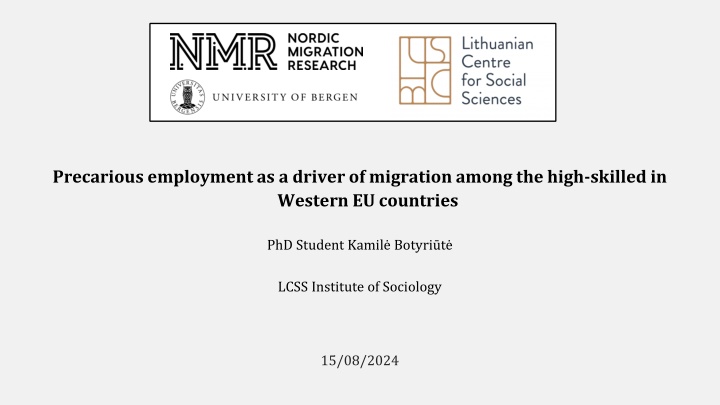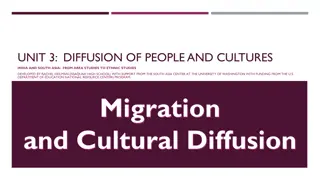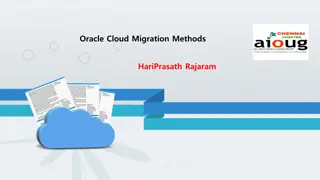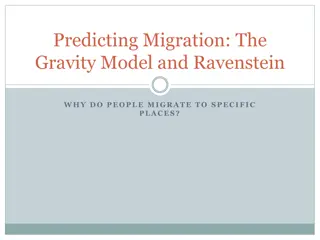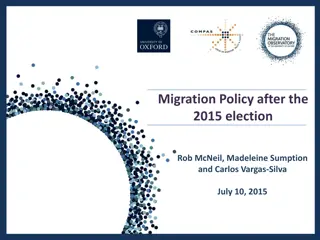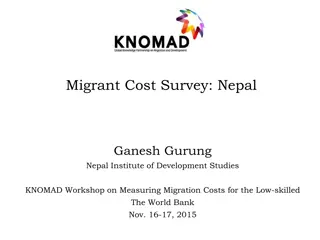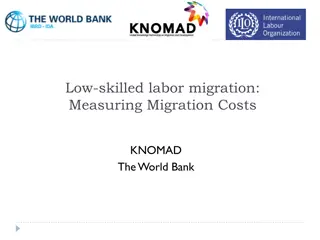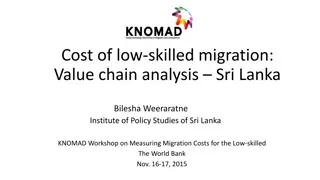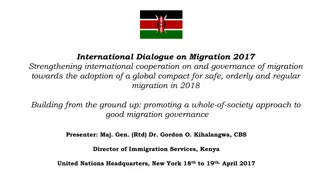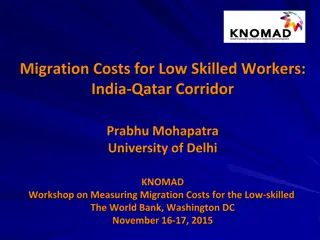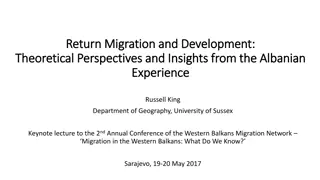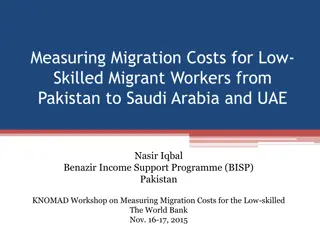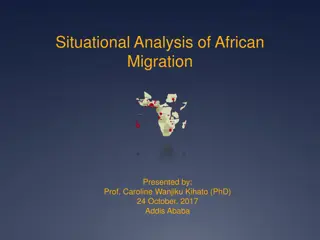Precarious Employment and High-Skilled Migration in Western EU Countries
The study investigates how precarious employment influences high-skilled labor emigration from Western EU countries, focusing on the link between employment insecurity and migration trends among high-skilled individuals. Data from Eurostat and qualitative studies are used to examine the impact of non-standard employment on the decision to migrate among the high-skilled workforce.
Download Presentation

Please find below an Image/Link to download the presentation.
The content on the website is provided AS IS for your information and personal use only. It may not be sold, licensed, or shared on other websites without obtaining consent from the author.If you encounter any issues during the download, it is possible that the publisher has removed the file from their server.
You are allowed to download the files provided on this website for personal or commercial use, subject to the condition that they are used lawfully. All files are the property of their respective owners.
The content on the website is provided AS IS for your information and personal use only. It may not be sold, licensed, or shared on other websites without obtaining consent from the author.
E N D
Presentation Transcript
Precarious employment as a driver of migration among the high-skilled in Western EU countries PhD Student Kamil Botyri t LCSS Institute of Sociology 15/08/2024
PRECARIOUS EMPLOYMENT Precarious work - employment that is uncertain, unpredictable and risky (Kalleberg, 2009). Part-time employment in the EU: 2002 vs 2019 (Eurostat) Precarious employment is most often linked to the nature of jobs and whether one is employed on a non-standard contract (Broughton et al., 2016; Olsthoorn, 2014). 2019 Part-time employment in the EU in 2019 stood at 19.2%, with the main reason for working part-time cited as not finding a full-time job . 2002 15/08/2024 2 Kamil Botyri t
PRECARIOUS EMPLOYMENT AND MIGRATION Studies link international migration or international migrants with precarity (McCollum & Findlay, 2015; Simola, 2018; Floros & Jorgensen, 2020). The relationship between precarity and migration is analysed through migrants experiences and their increased vulnerability to precarious working conditions in host countries. However, qualitative studies suggest that people migrate or plan to migrate due to precarious work positions and inability to secure a permanent employment (Cieslik, 2011; Marcu, 2019). 15/08/2024 3 Kamil Botyri t
HIGH-SKILLED MIGRATION AND PRECARIOUSNESS High-skilled migration is becoming a key characteristic of contemporary international migration (Docquier & Rapoport, 2012). Intra-EU/EFTA migrants with tertiary education (Eurostat) Employment conditions for high-skilled are particularly important as they are less likely to migrate due to severe economic hardships (Cieslik, 2011). Among those in precarious environment, the mismatch between formal education and expected job level is a historically unprecedented phenomenon (Standing, 2021). 15/08/2024 4 Kamil Botyri t
AIM OF THE STUDY To test the effects of employment precariousness on high-skilled labour emigration from Western EU countries. Does precarious work predict high-skilled emigration? What forms of non-standard employment are significantly related to high- skilled emigration? - - 15/08/2024 5 Kamil Botyri t
DATA Eurostat. Labour Force Survey, LFS and Labour Market database: The sample of EU-15 countries; A time period 2000-2019; Persons of working age (20-64 year- old); The involuntary character of non- standard employment through the lack of choice criteria. 15/08/2024 6 Kamil Botyri t
METHOD Fixed effects regression: ln_emigration ct = 1 temporary ct + 2 inv_temporary ct + 3 ST ct + 4 PT ct + 5 inv_PT ct + 6 UR ct + 7 earnings ct + c + t + ct ST Short-term PT Part-time UR Unemployment rate country fixed effects time fixed effects error term 15/08/2024 7 Kamil Botyri t
RESULTS Involuntary part-time employment Short-term employment Fixed-effects regression 0.013 0.107 High-skilled emigration 15/08/2024 8 Kamil Botyri t
DISCUSSION Part-time employment. Involuntary part-time significant positive predictor. Part-time workers are on the constant lookout for full-time employment due to underemployment, income inadequacy, inadequate utilisation of workers skills, job dissatisfaction and job insecurity. Short-term employment significant positive predictor. Low pay, heightened job insecurity, dissatisfaction, mismatches between occupation and education. Temporary employment. Temporary and involuntary temporary employment not significant. Temporary workers may have a goal to ultimately convert their temporary jobs into permanent jobs, maybe even within the same employer; temporary workers aim to gain more work experience, learn new skills, juggle between work and personal life. 15/08/2024 9 Kamil Botyri t
DISCUSSION Unemployment and Earnings. In the full model which includes all the independent variables, both of these variables were insignificant. Better working conditions and career opportunities may be more important factors driving emigration among the highly skilled in Western EU countries. Total emigration as a dependent variable. All independent variables were not significant. Those with higher educational attainment might be more likely to experience job dissatisfaction and status frustration in non-standard forms of employment due to their higher expectations for jobs. 15/08/2024 10 Kamil Botyri t
CONCLUSIONS AND IMPLICATIONS The results suggest that employment precariousness, identified through non-standard work contracts, is a better determinant of high-skilled emigration in Western EU economies than other labour market factors (earnings and unemployment). Involuntariness of non-standard forms of employment has also proven to be significant. Issues related to precarious employment may be important for migration policies aimed at attracting but also retaining a high-skilled workforce. Further increase in precarious jobs may exacerbate issues related to job insecurity, underemployment and status frustration, undermining European social development objectives. 15/08/2024 11 Kamil Botyri t
Thank you for your attention! kamile.botyriute@lcss.lt 15/08/2024 12 Kamil Botyri t
